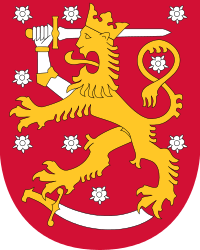Mainland Finland
Mainland Finland (Finnish: Manner-Suomi, Swedish: fasta Finland) is a term used in statistics and in other contexts to exclude the autonomous Åland Islands under Finnish sovereignty from the rest of Finland. In legal contexts, the relation between the mainland and the Åland Islands is depicted by the word pairs valtakunta–maakunta (Finnish) or riket–landskapet (Swedish). The literal translation into English is realm–province, but the translation given by the Finnish Ministry of Justice is the State–Åland.[1]
The term "mainland Finland" is significant in the context of legal differences between Åland and mainland Finland, and in the context of differences of culture, language, history, and self-perceived nationhood between the Ålanders and the Swedish-speaking Finns in mainland Finland. However, since the population of Åland is only about 0.5% of that of mainland Finland, and below 10% of that of the Swedish-speaking Finns in mainland Finland, there are many instances when this distinction is ignored.
Notes: In a geographical sense the term "mainland Finland" could, of course, also be used to exclude Finland's other sea islands, but when distinguishing between Åland and the rest of Finland, the term does encompass those islands. Mainland Finland is not to be confused with Southwest Finland, which is the historical province adjacent to Åland.
References
- ↑ Act on the Autonomy of Åland (1144/1991) and the Finnish original. E.g. § 27 shows the difference.
Coordinates: 65°N 27°E / 65°N 27°E
